This lesser-known cut is starting to take its rightful place on the scene. There is no cartilage or tendon, just a perfect bite from start to finish. We’ll take you step by step to get juicy, tender steaks every time. With our simple process you’ll grill a delicious, tender little steak like a pro.
Check out our Roasted Asparagus or Steakhouse Style Garlic Mashed Potatoes to make it a meal.
Because our recipe
- Foolproof step-by-step instructions for this delicious cut.
- Recipe tried and tested by a certified steak expert.
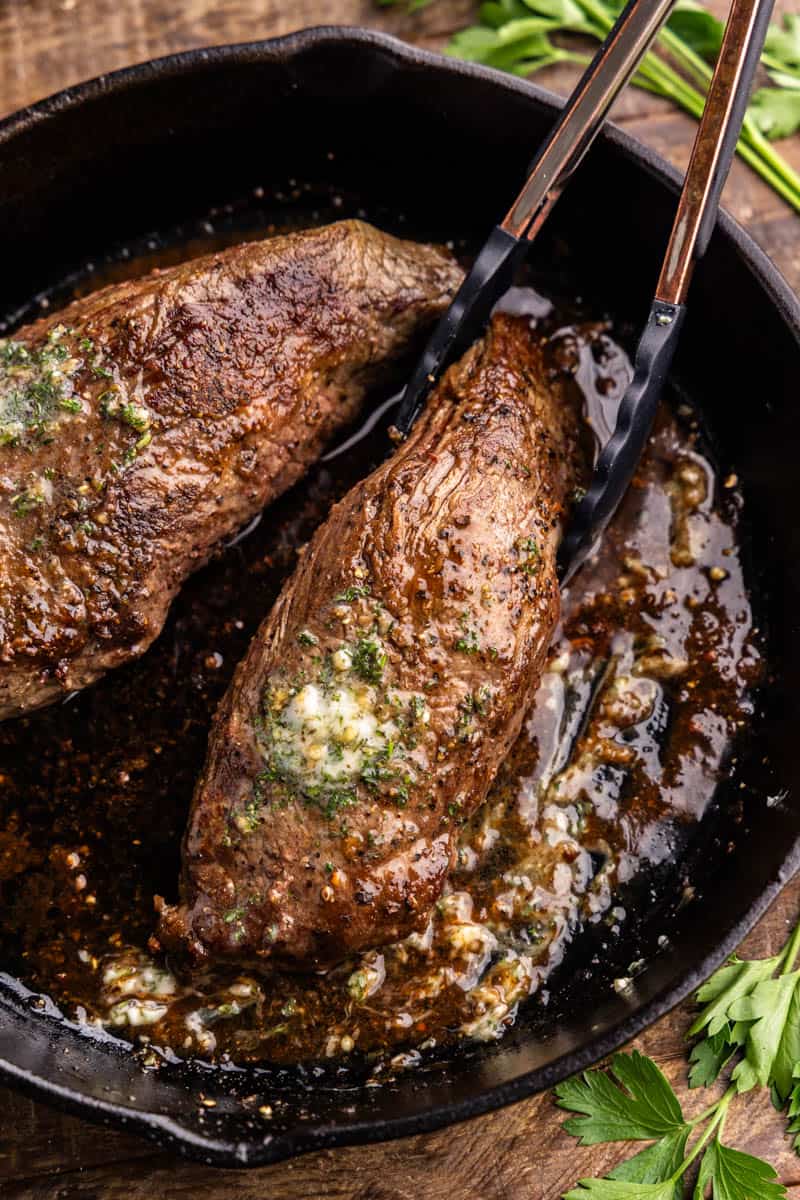

This cut resembles a mini beef tenderloin and tri-tip combined. I made so many for my husband’s birthday and I was really thrilled with them! If you can’t find them at your local grocery store, ask your butcher and see if he can butcher some for you. This cut is also known as bistro fillet or teres major.
Notes on ingredients
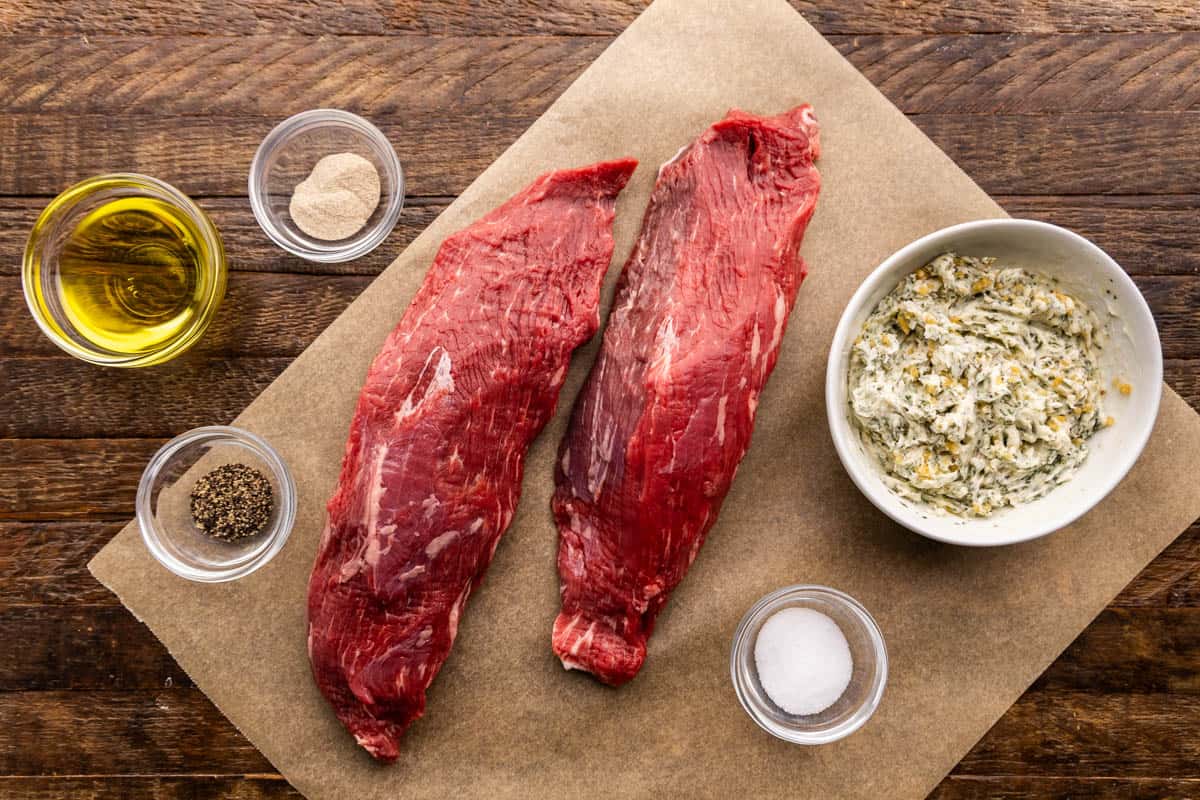

- Small, tender steaks: Since this steak does not have two flat sides, be sure to brown all edges. It may seem large, but it will shrink by 30-40% during cooking.
- Olive oil: This allows the seasoning to stick to the steak.
- Seasonings: These enhance the natural flavor of the meat without covering it.
- Resting Butter: This adds a lot of flavor to your steak. You can use our recipe for rested butter, plain butter, or add a touch of heat with our cowboy butter.
When to flip
Do not turn the steak until a nice brown crust has formed. Those crusts have a dimensional flavor profile that adds so much to the overall steak experience. You’ll know when to flip when the steak releases easily from the pan.
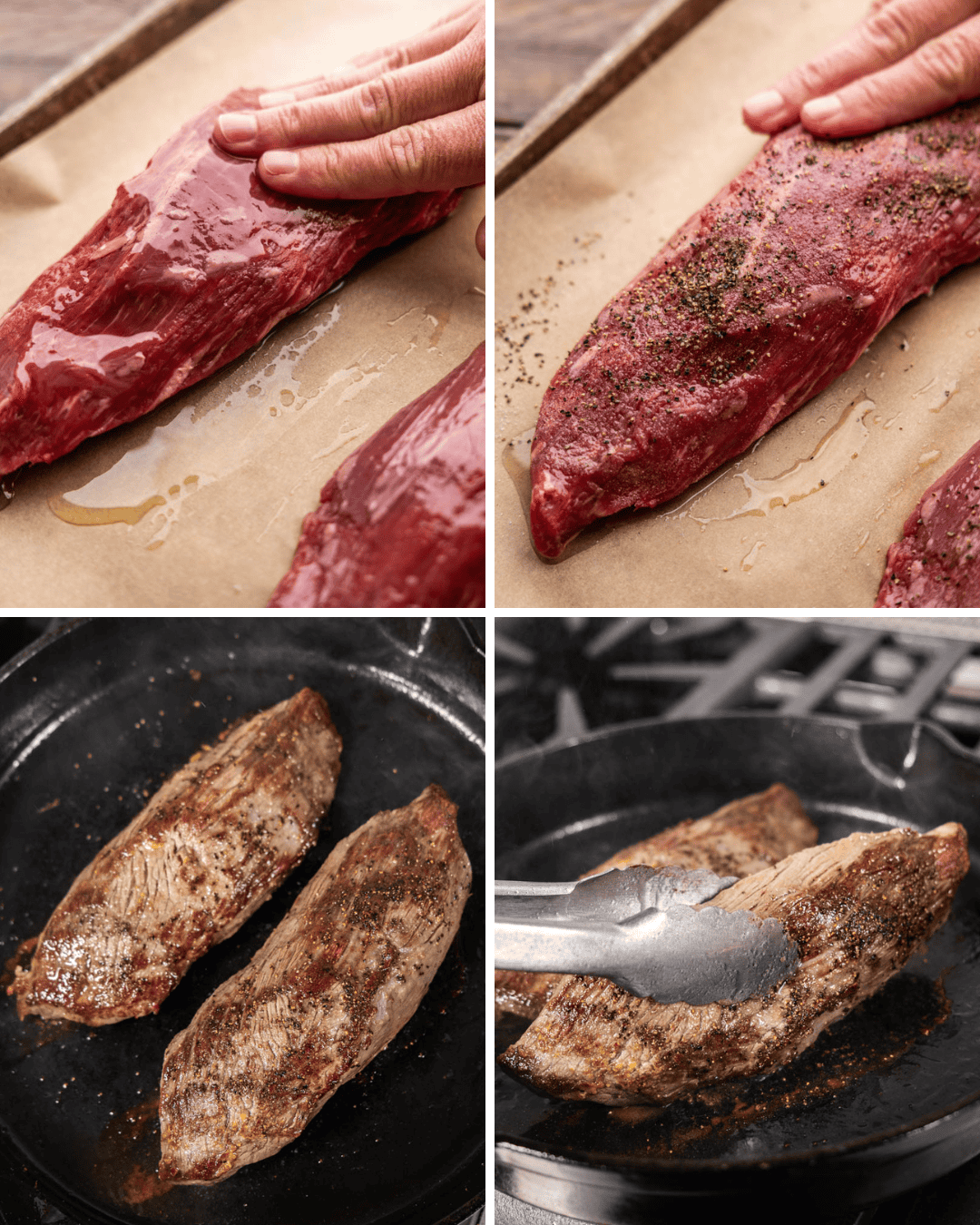

Cooking steak
The chef’s standard doneness level is medium-rare. At this point it will be tender and juicy, and if you do it right, the steak will melt in your mouth. Each steak has a different cooking time due to the different thickness of the cuts.
Instant read thermometers
Using an instant read thermometer is by far the best option to ensure accuracy. It takes the guesswork out of determining doneness by ensuring your steak is cooked exactly to your preferences. To use it, simply insert the probe into the thickest part of the steak, avoiding bones or fat. The thermometer will provide an accurate reading in seconds, letting you know if your steak has reached the desired internal temperature. Just try not to poke too many holes in the steak because you’ll notice that when you do, the juices run out.
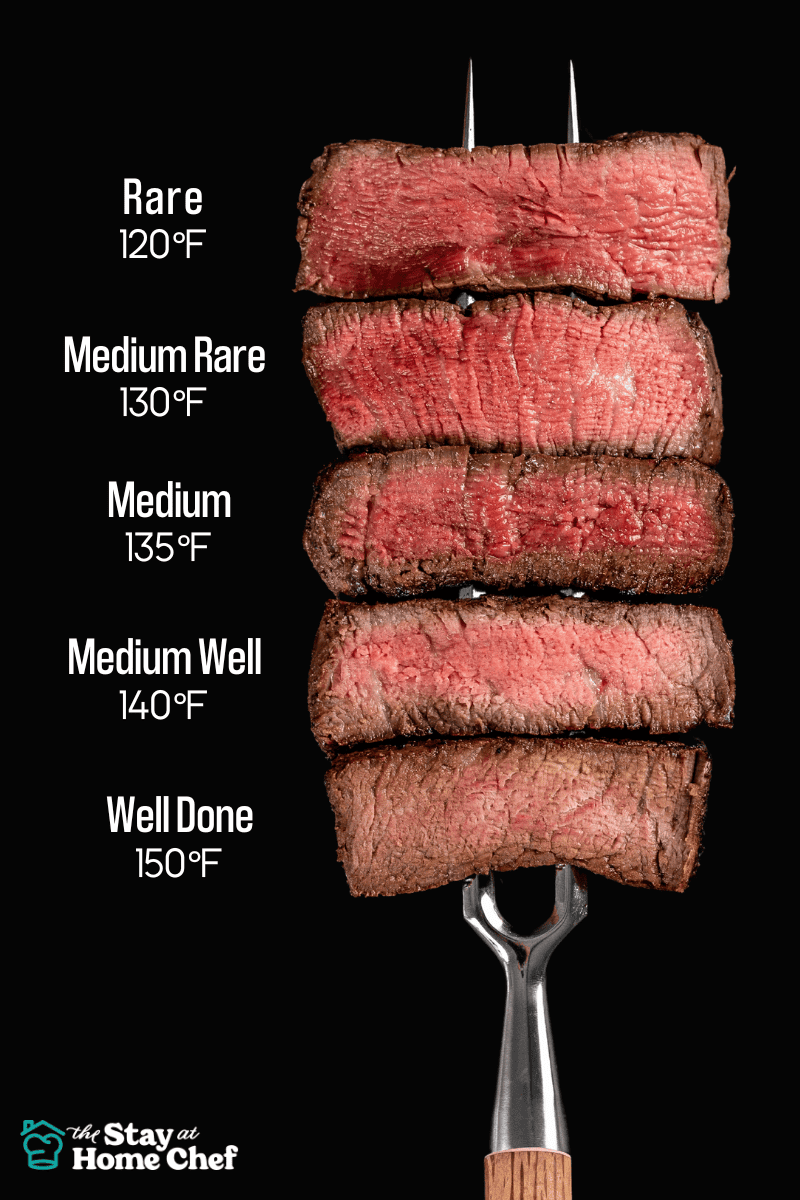

Cooking steaks to taste: “The thumb test”
Not everyone has an instant-read thermometer, and we understand that. With time and experience you can learn to judge the doneness of a steak by yourself. We will look at the “thumb test”, but keep in mind that it is very difficult to master cooking steaks by touch.
- Rare It should feel very soft and pliable. Lightly touch your thumb to your index finger and feel the fleshy area under your thumb. It should feel very soft, similar to the feel of raw meat.
- Medium-rare It should feel soft with some resistance. Lightly touch your thumb with your middle finger and feel the same area under your thumb. It should feel slightly firmer, but still soft.
- Medium it should feel firm but with a little give. Lightly touch your ring finger with your thumb and feel the area under your thumb. It should feel firmer and more elastic.
- Average-Good it should feel firm with very little give. Lightly touch your thumb to your little finger and feel the area under your thumb. It should feel quite firm with very little softness.
- Well done it should feel very firm without giving. Squeeze your thumb tightly into the palm of your hand and feel the area under your thumb. It should be very firm, similar to well-cooked meat.
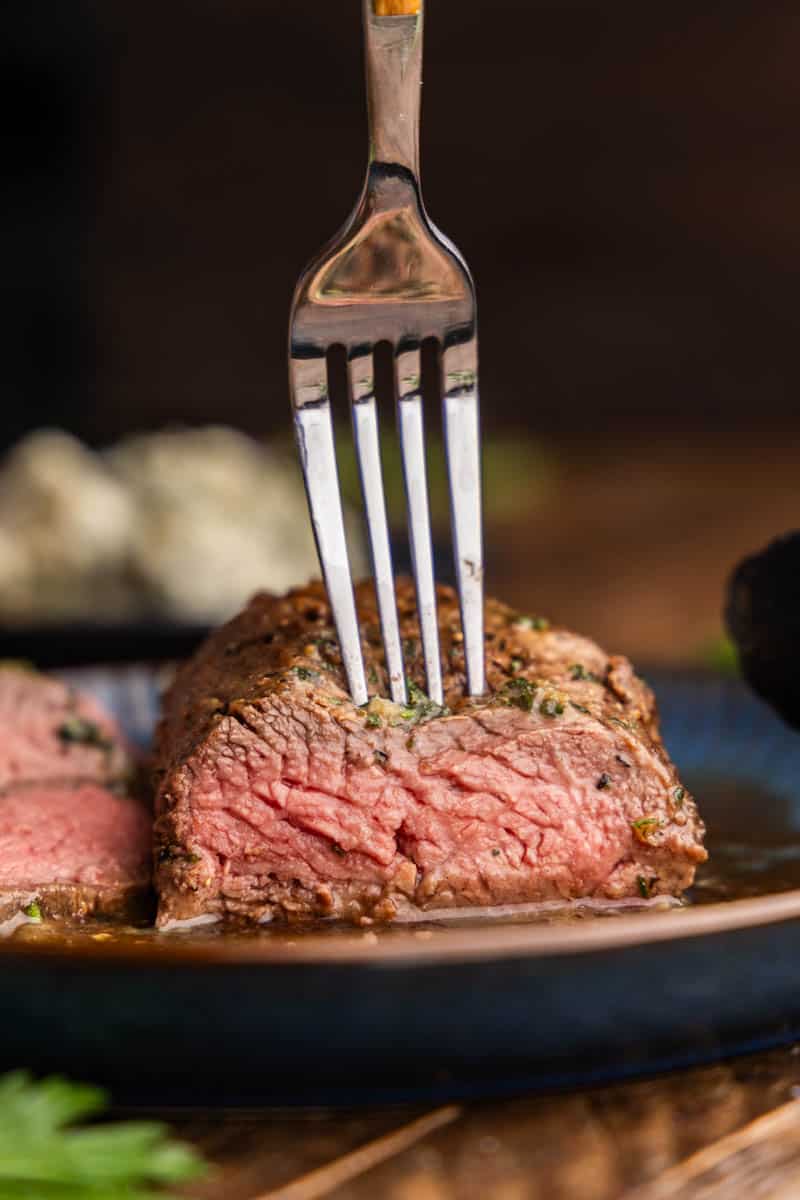

Dry brine
You can salt the steak up to 12 hours in advance. This is known as a dry brining method which can significantly improve the flavor of the steak and make it more tender. The salt penetrates deep into the meat, seasoning it all over. This process also helps the steak retain moisture during cooking, leading to a juicier final product. Additionally, salt breaks down some muscle proteins, making meat more tender. A petite tender is already quite soft so, although it is still possible to use the dry brining technique, it is certainly not necessary.
Instructions for storage and heating
Refrigerate leftovers in an airtight container for up to 5 days.
Heat portions in a skillet over medium heat or wrap in aluminum foil to retain moisture and reheat in a 300 degree oven for 10 to 15 minutes, until heated through.

